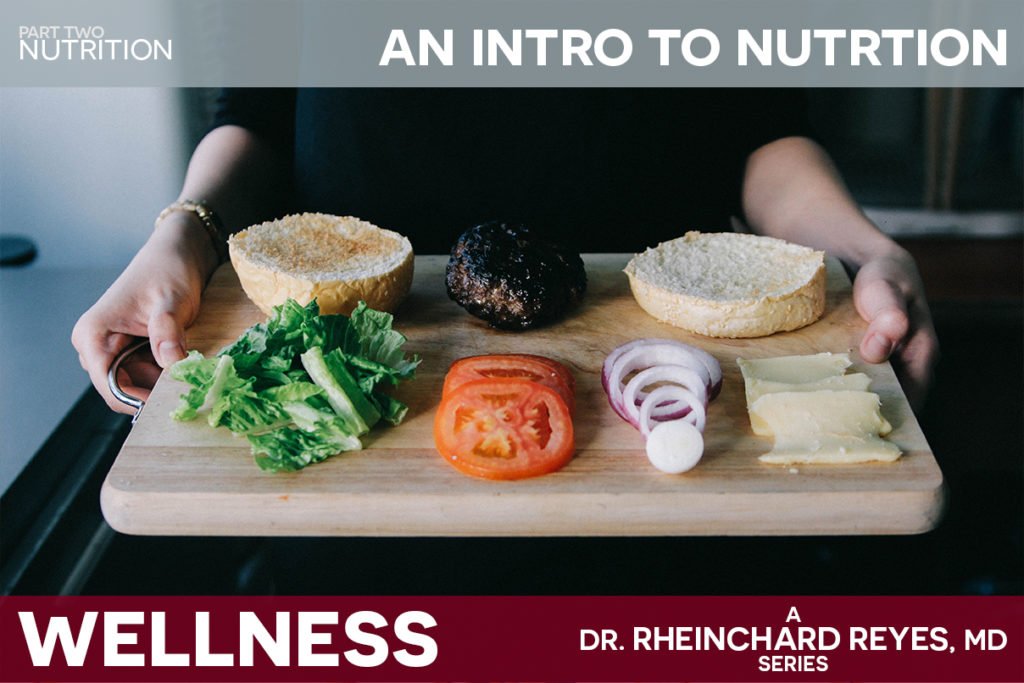Nutrition and health come hand-in-hand so it’s no wonder why there’s a growing level of interest when it comes to the components and nutrients in foods that we choose to nourish our bodies. It’s no wonder why the old saying “you are what you eat” has taken a more literal meaning over years as research consistently suggests that certain foods aid in the prevention of some illnesses while others worsen different conditions. This intro to nutrition will help you understand the basics and set the foundation for the upcoming issues on this trendy topic.
Basal Metabolic Rate
If weight loss is your ultimate goal, it’s helpful to know your basal metabolic rate (BMR) and your body mass index (BMI). Your BMR is a measurement of the number of calories needed to perform your body’s most basic or basal functions. These include breathing, blinking, circulation, new cell production among many others. Research suggests that your body burns anywhere from 60 to 75 percent of the total calories you use daily without the need of physical activity. You can obtain a rough estimate of your BMR using the Mifflin St. Jeor Equation below:
Male: BMR = 10 x weight (kg) + 6.25 x height (cm) – 5 x age (years) + 5
Female: BMR = 10 x weight (kg) + 6.25 x height (cm) – 5 x age (years) – 161
The most accurate estimate will come from a lab, but because testing can be costly most people choose to go with the above formula.
In order to figure out your total caloric requirement, you must multiply your BMR by your level of activity as outlined below:
- If you rarely exercise, multiply your BMR by 1.2
- If you exercise on 1 to 3 days per week, multiply your BMR by 1.375
- If you exercise on 3 to 5 days per week, multiply your BMR by 1.55
- If you exercise 6 to 7 days per week, multiply your BMR by 1.725
- If you exercise every day and have a physical job or if you often exercise twice a day, multiply your BMR by 1.9
Please note that you should only use this rough estimate to give you a better understanding of your basic needs.
Body Mass Index
Your BMI is a measurement of the amount of fat in the body based on the relation between your weight and height. BMI is a simple and noninvasive way to measure body fat in both adults and children. You can calculate BMI in adults by using either of the following formulas:
Metric: Weight in kilograms divided by height in meters, squared.
Imperial: Weight in pounds multiplied by 703 then divide by height in inches, squared
For adults 20 years and older, a healthy BMI ranges from 18.5 to 24.9- below 18.5 is considered underweight, between 25 to 29.9 is considered overweight and 30 and higher is considered obese.
Mediterranean Diet
When it comes to nutrition, it can be challenging to tell truth from myth. With every new debut of a “miracle” diet, confusion around the topic increases. There are, however, some research-based nutritional plans such as the Mediterranean diet. This is the ideal diet for most nutritionists. The key components to this diet consist of the following:
- Replacing saturated and trans fats (‘bad’ fats: butter) with polyunsaturated fats and monounsaturated fats (‘good’ fats: vegetable oils)
- Replacing salt with herbs and spices for flavoring foods
- Eating mostly plant based foods like fruits, vegetables, nuts, seeds, legumes, and whole grains
- Eating poultry and fish at least twice a week
- Limiting red meat intake to no more than a few times a month
- Getting plenty of rest and exercise
- Drinking red wine in moderation
The Nutrient Percentage Breakdown should be as follows: 35% Fat, 45% Carbohydrate and 20% Protein- Each meal should include the recommended nutrient amounts, per your specific caloric guidelines.
If you are looking to make a healthier change and work on a more balanced, heart-healthy eating plan, the Mediterranean diet is the way to go, but keep in mind that it needs to be accompanied by an exercise routine in order to yield optimal results.
We hope that with this intro you are now more aware of your body’s basic nutritional needs for proper functionality and that you can also identify your weight and overall health goals more clearly. Try to be mindful of what you put on your plate. After all, you really are what you eat!
It’s important to keep in mind that these recommendations are of general nature and you should always discuss any concerns with your medical physician.
Sources:



